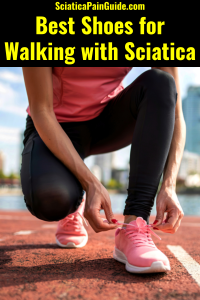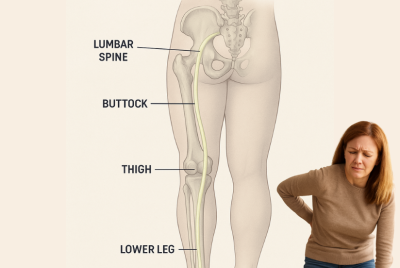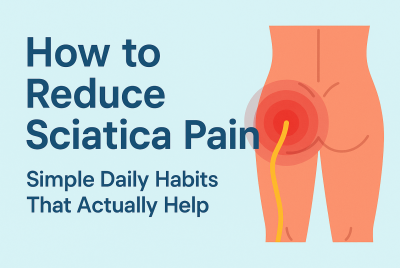Best Shoes for Walking with Sciatica – Top Footwear Picks for Comfort, Support & Pain-Free Steps
⚡ Why the Right Shoes Matter for Sciatica Pain
If you live with sciatica, even short walks can feel like a marathon.
That burning, tingling, or shooting pain down the leg can make every step uncomfortable — especially if your shoes aren’t supporting you properly.
What many don’t realize is that footwear plays a huge role in spinal alignment.
The wrong shoes can worsen pressure on the sciatic nerve, while the right pair can stabilize your posture, absorb impact, and reduce inflammation.
Whether you’re walking for fitness, commuting, or just moving around the house, the right shoes can make the difference between pain and progress.
Let’s explore the best shoes for walking with sciatica — plus expert advice on what features truly matter for nerve pain relief.
🧠 Understanding the Sciatica–Foot Connection
Sciatica originates from irritation or compression of the sciatic nerve, which runs from your lower back through your hips, buttocks, and legs.
When this nerve is inflamed, pressure and impact from walking can intensify the pain.
Shoes that lack proper arch support or shock absorption can cause:
-
Misalignment of the spine
-
Tightness in the hips or hamstrings
-
Extra stress on the lower back
👉 That’s why choosing shoes with orthopedic-level cushioning, arch structure, and balance correction is crucial for reducing pain while walking.
🏆 Best Shoes for Walking with Sciatica (2025 Picks)
These shoes are chosen for their comfort technology, pressure relief, and real-world performance — all available through U.S. retailers like Amazon, Zappos, or Skechers.
1. 👟 New Balance 990v6 – Best Overall for Stability
Why it works:
The 990v6 offers superior arch support and heel stability, which helps align your hips and lower spine. The ENCAP midsole cushioning absorbs impact and supports natural motion.
Key Features:
-
Dual-density foam midsole
-
Motion-control design for neutral alignment
-
Breathable mesh upper
Best for: Daily walks or all-day wear
Available at: newbalance.com
💬 Expert Tip: Try wide-fit options if you experience numbness or tingling in your feet.
2. 🩰 HOKA Bondi 8 – Best for Cushioning
Why it works:
HOKA’s signature maximal cushioning helps reduce vibration through the legs and spine — a game changer for people with nerve pain. Its rocker sole encourages smooth heel-to-toe transitions.
Key Features:
-
Extra-thick EVA midsole
-
Rocker geometry for fluid movement
-
Lightweight yet durable
Best for: Long walks, mild to moderate sciatica
Available at: hoka.com
3. 🧦 Brooks Ghost 15 – Best for Everyday Comfort
Why it works:
Soft, neutral support that adapts to your stride. The DNA LOFT v2 cushioning minimizes stress on the knees and lower back — ideal for daily errands or standing at work.
Key Features:
-
Plush heel cushioning
-
Responsive forefoot for energy return
-
Breathable upper fabric
Best for: Flat feet or light pronation
Available at: brooksrunning.com
4. 🏃♀️ Skechers Arch Fit – Best Budget-Friendly Option
Why it works:
Developed with podiatrist-certified arch support, this shoe helps evenly distribute body weight and reduce sciatic pressure. Memory foam insole molds to your foot’s shape for a custom feel.
Key Features:
-
Certified by podiatrists (based on 20 years of data)
-
Lightweight midsole
-
Easy slip-on design
Best for: Seniors and casual walking
Available at: skechers.com
5. 🦶 Orthofeet Coral – Best for Orthopedic Relief
Why it works:
Designed specifically for back and foot pain, Orthofeet shoes feature ergonomic soles, wide toe boxes, and extra depth to relieve pressure points.
Key Features:
-
Anatomical arch support
-
Gel-padded insoles
-
Seamless interior to prevent friction
Best for: Chronic or severe sciatica
Available at: orthofeet.com
🌿 What to Look for in the Best Shoes for Walking with Sciatica
When shopping, focus on supportive features, not just style.
Here’s what to prioritize:
✅ 1. Arch Support
Proper arch support keeps your feet aligned and prevents your knees and hips from tilting inward — a key trigger for sciatic nerve strain.
✅ 2. Cushioning
Look for shock-absorbing midsoles or memory foam insoles. Cushioning reduces the jolt your spine takes with every step.
✅ 3. Heel Stability
A firm heel counter (the back part of the shoe) helps maintain balance and prevent overpronation — when your foot rolls inward too much.
✅ 4. Flexible Sole
You need shoes that move with your gait — flexible at the ball but stable at the heel.
✅ 5. Proper Fit
Too-tight shoes can restrict circulation, while loose ones make your posture uneven. Always try on shoes in the evening when your feet are slightly swollen for a true fit.
🧘♀️ Additional Walking Tips for Sciatica Relief
Even with the right shoes, how you walk matters.
🚶♂️ Try These Walking Techniques:
-
Keep your spine tall and shoulders back — avoid slouching
-
Engage your core with gentle tension
-
Take smaller, slower steps to minimize impact
-
Avoid uneven ground or steep inclines during flare-ups
💡 Pro Tip:
If pain flares during walks, alternate between 5 minutes of walking and 1 minute of stretching to release pressure on your lower back.
🛋️ Helpful Accessories for Added Support
Pair your new shoes with small lifestyle upgrades that support alignment and mobility:
| Product | Use | Example |
|---|---|---|
| Orthotic Insoles | Extra arch and heel support | Dr. Scholl’s Orthotics for Back Pain |
| Compression Socks | Improve circulation | Physix Gear Compression Socks |
| Standing Desk Mat | Reduce strain from standing | Topo Comfort Mat |
| Back Brace | Supports lower spine | Mueller Lumbar Support Brace |
These small additions can significantly improve your comfort when standing or walking for long periods.
⚠️ When to See a Doctor or Podiatrist
Even the best shoes can’t fix underlying issues if your sciatica is caused by a serious spinal problem or chronic nerve compression.
👉 Seek medical help if you experience:
-
Persistent pain lasting over 6 weeks
-
Numbness or weakness in your foot or leg
-
Shooting pain after a fall or injury
-
Difficulty walking for more than a few minutes
-
Changes in balance or coordination
A podiatrist or orthopedic specialist can evaluate your gait, prescribe custom orthotics, or recommend physical therapy to correct movement patterns.
❓ 7 Common FAQs About Shoes for Sciatica Pain
1. Can the wrong shoes make sciatica worse?
Yes. Poor cushioning or arch support can increase spinal misalignment, causing more pressure on the sciatic nerve.
2. Are running shoes good for walking with sciatica?
Yes, many running shoes like the Brooks Ghost or HOKA Bondi offer excellent shock absorption and ergonomic support for walking.
3. What are the best shoes for standing all day with sciatica?
Orthopedic options like Orthofeet Coral or Skechers Arch Fit are best for prolonged standing or work environments.
4. Should I use insoles for sciatica pain?
Absolutely. Quality orthotic insoles can provide extra cushioning and maintain spinal alignment.
5. Can walking barefoot help sciatica?
Not usually. Hard surfaces can worsen nerve compression. Use cushioned slippers or arch-support sandals at home instead.
6. What’s the difference between orthopedic and athletic shoes?
Orthopedic shoes focus on posture correction and pain relief, while athletic shoes are made for performance. Some, like HOKA or New Balance, blend both benefits.
7. How often should I replace my walking shoes?
Every 6–12 months or after 300–500 miles of use. Worn-out soles lose support and increase stress on your back.
🌈 Conclusion: Step Toward Comfort and Healing
Choosing the best shoes for walking with sciatica isn’t just about comfort — it’s about protecting your body’s foundation.
With the right pair, every step becomes a form of therapy — reducing nerve pressure, improving balance, and restoring your confidence to move pain-free.
So whether you prefer cushioned sneakers, orthopedic walking shoes, or supportive insoles — remember:
👉 The right shoes can be one of your best tools for sciatica relief.
🌿 “Heal from the ground up — one supportive step at a time.”
⚕️ Medical Disclaimer
This article is for informational purposes only and should not replace medical advice. Always consult a healthcare professional or podiatrist before making footwear changes, especially if you have chronic pain, nerve damage, or orthopedic conditions.

- Can Acupuncture Help With Sciatica?
- What Can I Do for Sciatic Nerve Pain?
- Sciatic Nerve Stretches to Relieve Pain





